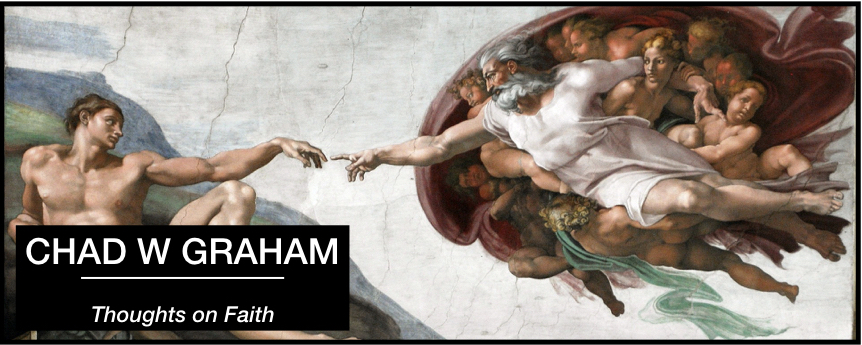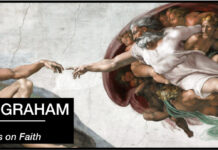
What do we mean when we call God a Trinity, and why does it matter? For the Christian tradition, the Trinity explains love, life, the universe, and pretty much everything. The word describes God, as a Tri-Unity, a Three and One. The Trinity focuses on the relationship of three divine Persons, in the one divine Being (Learn more: A Crash Course). It sounds pretty conceptual and impractical. However, in the Christian tradition the Trinity is the most practical and essential of Christian Doctrines.
The Trinity is the Framework of the most basic affirmation of faith, the Baptismal formula: “I believe in one God, the Father Almighty… and in Jesus Christ His only Son, our Lord [and] in the Holy Spirit” (The Apostles Creed). Without understanding the Trinity rightly, we will have a wrong understanding of our origins, of our destiny, and of our purpose. We would not understand love and life would be meaningless. This is very practical knowledge. But what is this belief? How can we understand the Trinity, and how can this be practical? We need the help of a genius! Fortunately, church history provides several geniuses who have explained the Trinity very clearly and practically.
The Trinity: What the World Needs Now
Jonathan Edwards (October 5, 1703 – March 22, 1758) was one of the most practical Christian thinkers in history. He was a pastor, theologian, revivalist, college president, missionary, and revival leader. His work on the Trinity is immensely practical. But before getting into the Trinity, I want to take a moment to talk about love. The world needs more love. But what is Love?
The Trinity: What is Love?
One of his major works was a book based on his sermons on 1 Corinthians 13 (known as the love chapter). Edwards called his book, Charity and Its Fruits: Christian Love as Manifested in the Heart and Life (Amazon; .ca; .co.uk). This book, as the title implies is about the nature of Christian love nurtured inwardly and expressly lived out in life. The concluding chapter points us to Heaven, as “a world of love.” One Amazon reviewer commends this book saying, “Full of application, you will not be dissapointed [sic] with this work.” Another affirms, “if it is your desire to be conformed into the image of our glorious Lord Jesus, this book will certainly be used of God in that respect.” (source)
Love, as a concept is pretty philosophical. What is love? Where does it exist? How do we describe it? Does it matter whether we get it right? Well, what happens when love is twisted? Psychologists speak of “the common association between love and hate, and the relative frequency with which one of these sentiments can transform into the other” (source). For Star Wars fans this is illustrated perfectly in the fall of Anakin Skywalker, whose love became twisted and dark, ending in tragedy (YouTube).
The Trinity: What’s Love Got to Do with It?
The Trinity is something like Love. It too seems somewhat philosophical. But, as with love, we soon find it to be very practical. We have to get it right. When we twist our understanding of the Trinity, we fall into tragic spiritual (and perhaps moral) darkness.
Edwards rooted his whole understanding of life, and lived out his entire pastoral, personal, academic, and spiritual life in contemplation of the practical Trinity. For Edwards, the Trinity is the absolute expression of love.
The Trinity: Edwards Practical Foundation
Edwards was not the first Trinitarian thinker. He followed the great St. Augustine, who formulated a Psychological understanding of the Trinity in the 4th Century. The basic Idea assumed that God both existed and posited certain ideas about himself. Edwards took this psychological understanding and moved significantly in applying its implications (“The Miscellanies no 94” in Works of Jonathan Edwards vol 13, The Miscellanies and “Discourse on the Trinity” in vol 21, Writings on the Trinity, Grace and Faith).
The Trinity: A Cycle of Delight and Love
In this next section I rely heavily on Sean Lucas, in God’s Grand Design: The Theological Vision of Jonathan Edwards. He effectively summarizes Edwards Trinitarian writings (Amazon; .ca; .co.uk pp 24-25). God he Father, contemplates a perfect image of himself. Being perfect this image exists, and being a perfect image, exists as the eternally begotten Son of God the Father. God the Father, naturally, delights in this self-reflection. Also, as the express image of God, the Son returns God’s own delight. The delight which proceeds between the Father and Son, and between Son and Father, is to Edwards Infinite Love. And Infinite Love (not having the finitude of non-existence, also exists) is the Holy Spirit.
In short, God the Father loves his Image and always delights in contemplating the expressed eternally begotten image of himself, God the Son (and vis versa). The love and delight that eternally proceeds between them is infinite love, God the Holy Spirit. This is at the heart of the Biblical definition “God is Love” (1 John 4:8).
The Trinity: Edwards Practical Application of Love
Edwards turns this contemplation on divine delight and love into practical application. This time picking up hints from the Cappadocian Fathers, Edwards reflects on how God is happy in himself. His inner Being, from all eternity, has been utter delight and love among the three. And so, “It is evident, by both Scripture and reason, that God is infinitely, eternally, unchangeably, and independently gloriously and happy: that he stands in no need of, cannot be profited by, or receive anything from the creature” (The Ends for Which God Created the World, p. 420).
Why then did God create the world? Edwards explains that it was in order that he might communicate the fullness of Trinitarian delight outside himself. This communication could then become a two-way delight, as his Creation returned happiness and delight toward him.
This delight in God overflows from the redeemed (those who have trusted in and been redeemed by the work of Christ). And so for Edwards, the work of Christ accomplished the grand design of God in drawing the redeemed creation in to the Trinitarian life that they might participate and communicate in the eternal happiness of God (see Edwards “Miscellanies no 570”, and God’s Grand Design, pp 26-27)
The Trinity: a Summary of Life, The Universe, and Everything
God is Love. His love is expressed first within himself, eternally begetting his Son. Together they are eternally processing the Holy Spirit, in perfect delight. God created us to share in this Triune love. Through the Work of Christ, we are brought into the Father’s love, and abide in his love. We love him, because he first loved us.
From this the whole of the Christian life unfolds. We know our origins—to express the Love of God. Our final destiny is revealed—to share in the Love of God. We know our purpose—to live out the love of God. And so Edwards spent 15 weeks preaching on Charity and Its Fruits: Christian Love as Manifested in the Heart and Life, which he intended to form the introduction to his series “The History of Redemption” (source).
For Edwards all of this was rooted in his understanding of the Trinity. Without understanding the Trinity rightly, we would have a wrong understanding of our origins, of our destiny, and of our purpose. We would not understand love and life would be meaningless.






[…] What do we mean when we call God a Trinity, and why does it matter? For the Christian tradition, the Trinity explains love, life, the universe, and pretty much everything. The word describes God, as a Tri-Unity, a Three and One. The Trinity focuses on the relationship of three divine Persons, in the one divine Being (Learn more: A Crash Course). It sounds pretty conceptual and impractical. However, in the Christian tradition, the Trinity is the most practical and essential of Christian Doctrines (How the Trinity Explains Love, Life, the Universe, and Everything). […]